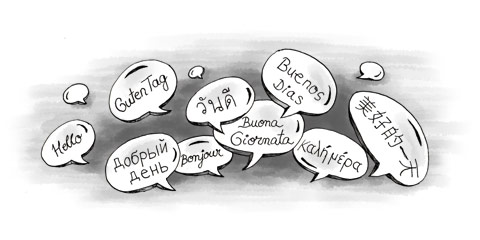Spanish
If you're used to Spanish from Spain or Castillian Spanish, it might take you a little time to get used to Panamanian Spanish. Overall, Panamanian Spanish is easy to understand. Unlike in Spain, Panamanians tend to speak slowly, which is great for learning the language. A main difference between Spanish from Spain and Panamanian Spanish is that the letters c and z are usually pronounced as the letter s.
In Panama City, people tend to mix Spanish with English as slang – this is known as 'Spanglish'. For instance, young people use el man to say “the guy”, or está bien pretty to say that something is very nice.
There are also many funny local expressions you may hear, like racataca for someone who has no class, or yeye for someone who pretends to be rich and is living beyond their means. Another word you will often hear is la vaina, which is slang for “the thing”.
You should also know that in Central America people are very attached to good manners. So, to approach someone, you should always start with buenos días (good morning) or buenas tardes (good afternoon) and use the polite form usted (you), especially with police officers.
Native languages
Though Spanish is spoken by nearly everyone including minority groups, there are many native languages still spoken in Panama. Despite the small size of the country, there are several indigenous cultures that are keen on keeping their original languages alive.
One of the largest native Panamanian groups is the Ngöbe-Buglé, which comprises two ethnicities, the Ngöbe and the Buglé. These ethnicities are very close and both groups speak the same language: the Ngöbe-Buglé or Guaymí language. However, as a foreigner, you might never get the chance to hear it as this is a group that is wary and discreet around strangers.
On the other hand, the Kunas are very proud of their culture and language, and will teach you their language with enthusiasm. The Kunas are the most independent group as far as government and economy and they have their own schools where kids learn both Spanish and Kuna. However, some older Kunas might not speak Spanish.
In the province of Darien at the shores of the Chucunaque, Sambu, Tuira Rivers, live two indigenous groups called the Emberá and the Woonaan. They are both part of the same “family” known as the Chocó, but each has their own native language.
In the town of Old Bank, on Isla Bastimientos in Bocas del Toro, live the descendants of West Indians who emigrated to work in the banana industry. They speak a creole language that is a mix of Spanish, Ngöbe-Buglé and Afro-Antillean English.
English
Until 1999, the Panama Canal was controlled by the United States. As a result, many people in Panama City and in the areas around the canal speak very good English. But despite the American presence all these years, not everyone in Panama speaks English. In fact, only wealthy Panamanians speak fluent English. Most Panamanians understand basic English, but it would be wise to learn a little Spanish, as most expats do.

